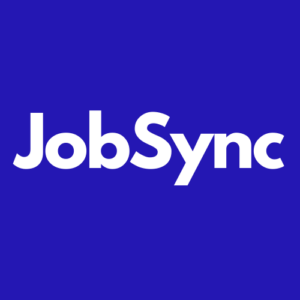
New year, new candidate experiences. Actually, it does not seem like much has changed but according to the Top CandE Large Employer Winner there’s still room for improvement. We kicked off 2023 with a new-ish format for our monthly roundtable and welcomed not just one, but two special guests. Kevin Grossman of Talent Board and David Crawford of New York Presbyterian Hospital joined us to talk about what companies can do to improve candidate experience, stand out, and stay competitive when it comes to hiring top talent. Catch the full replay here.
Kevin kicked us off with some new data coming out of the latest Candidate Experience Report.
Based on surveys with thousands of candidates and recruiters, the Talent Board found that:
61% of 2022 North America CandE Award Winners align recruiter performance with candidate experience
Follow up and feedback is still critical. Yet, only 44% of the 2022 companies said they establish a follow-up date with finalists
Candidate perception of fairness is key. The top 10 CandE Award Winners have doubled down on fair assessment and interview processes.
Download the entire report here.
David helped round out The Talent Board’s findings (did we mention David’s team at NYP came in first place in large employers for their candidate experience) with how he and his team live those values by implementing process, technology and humanness in every step of the recruiting process.
Human connection matters
The candidate experience is a human experience. Well, it used to be. Many companies have implemented chatbots, AI, and automation throughout the hiring process, and candidates think there is even more AI in the selection process than there really is. Within these tech offerings are often impersonal, automated messaging and outreach that come standard with the tech in an attempt to save time. But at what cost?
Common sense tells us that people connect better with people – not robots. So it also makes sense that a candidate does not have to be well versed on the inner workings of your tech stack to know when they are receiving an automated message (even the fonts they use feel automated). While it may only take a few moments of someone’s day, receiving a message about a job status update that ‘feels’ human can have a real impact. (Psst – this is your reminder to update your auto responder.) But, it’s more than that. There is a certain point in the process when the candidate deserves to have a real person let them know they aren’t getting an offer. Once they have reached that threshold – a real person needs to pick up the phone. David’s team calls every candidate that gets interviewed. No exceptions. And if it’s an internal candidate, they get a call no matter how far (or not) they get in the process.
The same lens should be applied to how your recruiters communicate with candidates. Personality goes a long way. It is not realistic to have the expectation that candidates will bring their best selves to the hiring process if it is not reciprocated. Companies are not on an episode of The Bachelor – candidates have options other than just your open role. When you are less than genuine, candidates are less than interested.
Keep potential candidates up to date
Candidates are aware that part of the process is hearing a decision so when it comes to feedback, respect their time and deliver your message fast. David pointed out that it takes less than one minute to turn someone down so take the time and do it right and remember, there is nothing wrong with saying ‘no’ early on.
“People would rather hear no, than nothing.” – David Crawford
But excellent candidate experiences aren’t silence and then a yes or a no. They are a two way conversation where the candidate is kept informed of where the company is at in the process as much as where the candidate is at. If there is an unexpected delay, recruiters can’t fear that update, rather they should run towards it, explain it, and help the candidate understand the why behind the delay.
A delay of a few days or weeks may not be significant for a company, but it could be significant for a candidate who needs a paycheck.
By preempting updates and keeping candidates apprised of the progress through the process, recruiters can reap an unintended benefit: candidates will share more about their own process, other opportunities, and if the company has a viable chance of securing these candidates as a hire.
Communication really is a two-way street.
“If they are not customers of your service, they are influencers in your industry.” – Stephen O’Donnell
The people who we say no to can often become a decision maker of our service, a consumer of our products, or influence the decision of others. It’s important to never underestimate the power of one voice.
Set realistic boundaries for candidates
Once you have figured out the best way to put the human touch back into your automated outreach and how to bring your best self to the process, think about your time to hire. What can you do to set the best expectations with your candidates (and hiring managers)?
“You can’t make all candidates happy. With the advent of trackers like Uber and Pizza Trackers people have formed those same expectations around the application process. Candidates want to know what’s going on and where they are in the process.” – Tiffani Pope
The challenge with all of these trackers is that they start from a simple process, generally without the dependency of a single person (hiring manager) and are highly predictable. Hiring is not – especially low volume, skills-based hiring. Candidates are professional buyers, they are not professional candidates. But the parallels of the experience are too close, which has led to buyer expectations inside a process that is anything but optimized.
Automate what doesn’t need personalized
So much of a recruiters day is mired in activities that don’t need that personal touch. Moving data from an email into an ATS, writing rejection letters to candidates, manually dispositioning hundreds of candidates, reserving time on calendars and finding interview spots for the hiring manager and interview team. The list goes on. Nothing in this paragraph should be done by a recruiter at this day in age.
Not only are these mundane activities, they offer no value in being done manually and worse, add significant time into a process where speed provides a material advantage. The time it takes to manually move a candidate that is only on a dashboard of a job board into an ATS, is unfathomable…especially if you have to move 100, or a 1000. But working out of two systems is not only difficult, it’s also most likely, against policy.
And remember, time matters
Time is more than time…time is a candidate wondering if they made it to the next step.
Time is your top candidate getting an interview at your top competitor.
Time is your candidate finally getting that raise at their current employer.
Time is doubt and lost opportunity.
Time doesn’t just kill all deals – it kills top prospects.
Time doesn’t just get you during the sourcing, interviewing and selection process, time also creates opportunities for your future employee to get that counteroffer or change their minds.
Recruiting doesn’t stop after an offer is accepted
One of the biggest candidate experience changes that companies have recently made, and to great outcomes, is the creation of the pre-boarding process/team. Herein, at least one person, if not a team, is tasked with not only making sure your future employee has all the access, equipment and tools they need to get started on day one – they are communicating with regularly. For some companies this means some getting ready videos or access to employee testimonials. For other companies, a swag box shows up with company branded gear.
And while all the glitz and glamor, swag and high polished videos, a simple phone call from the hiring manager, to your future employee during the transition period has the biggest bang for the buck. It’s the simplest way to remind them why they said ‘yes’ to the job, company, team and leader.
Don’t forget: candidate experiences are human experiences
In the end it all comes down to the age old adage: Treat unto others as you would like to be treated. Give candidates the respect they deserve as fellow humans in this crazy world, trying to do the right thing for themselves and their families. People might love their work, but the need to feel appreciated, valued and that doesn’t come from an AI or a box of swag, it comes from the simple act of communicating, human to human.


